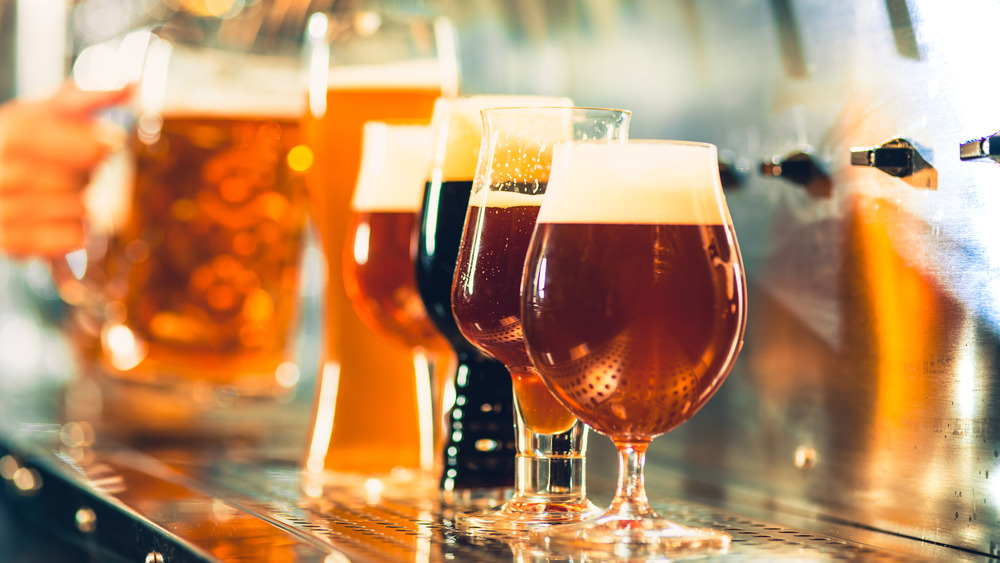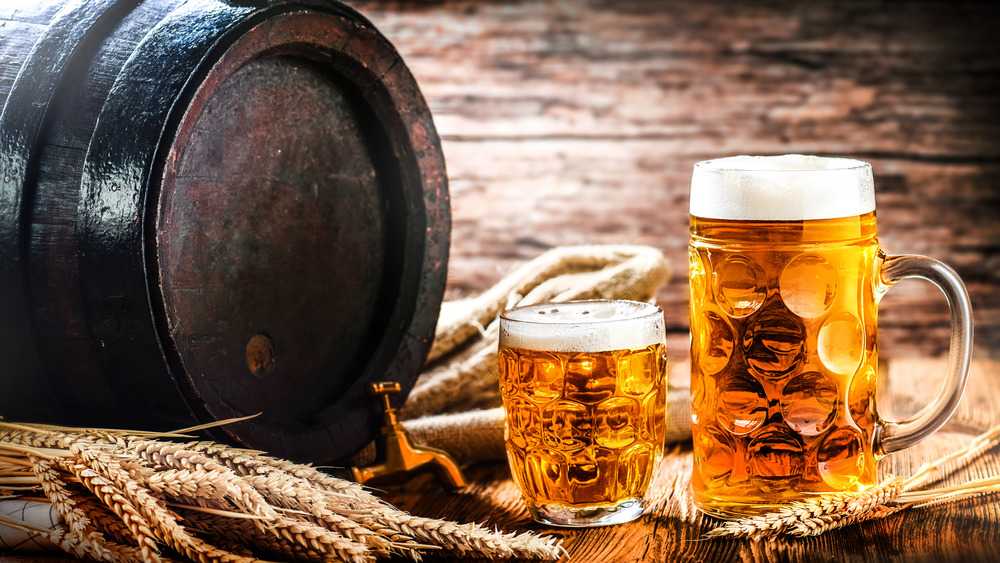This Is The Real Difference Between Ale And Lager
We've all been there. You're standing at a chaotic, noisy bar, elbowing your way to the counter, trying to catch the bartender's eye. When the moment finally arrives, and the bartender asks innocently, "What'll ya have?" The din around you seems to die away. Suddenly, all you can see is a seemingly endless row of colorful tap heads, boasting beers of every make, model and hue. If the choice in front of you seems daunting, it might help you to know that there are really only two kinds of beer: ale and lager.
That might sound bizarre given the multitude of beer styles your bartender just rattled off, not to mention the brewing companies shouting their names in neon from the walls, but it's true. Let's start with the basics, as outlined by Vine Pair: beer is born of the right combination of water, malt, hops, and yeast. When the yeast in that recipe ferments (which is to say, when it eats the sugar in all the other ingredients, and turns it into alcohol), you have a beautiful brown byproduct called beer. The key to understanding the two different types of beer — ale and lager — is learning exactly when that fermentation process occurs.
The difference is all in the fermentation process
To figure out if what you're looking at is an ale or a lager, you have to follow the yeast. Ale yeast ferments (turns things into alcohol) at a warmer temperature than lager yeast, according to Chowhound. Making ale means keeping your brew in tanks that are heated to at least 60 degrees Fahrenheit during fermentation, whereas fermenting lager yeast should be done between 35 and 55 degrees Fahrenheit. Because of the cooler environment, it takes lager a little longer to ferment. (So think, lager: lower and longer.)
The difference in fermentation processes means two different types of beer. Ales tend to be brighter, with bolder, more complex flavors; while lagers are usually clean, crisp, and smooth, with an underlying sweetness (via Chowhound). Either one can be used in cooking, as long as it's not overly hoppy, and both can be downed (responsibly) at bars, ballgames, and baby showers. Ales, from IPAs to stouts and sours, are found in abundance at craft breweries; while lagers, like pilsners and ambers, are often recognized by their well-known labels. (Heineken, anyone?) Now, the difference between light beer and regular beer? That's another story. But that's the beauty of beer — there is so much to explore beyond the basics.

